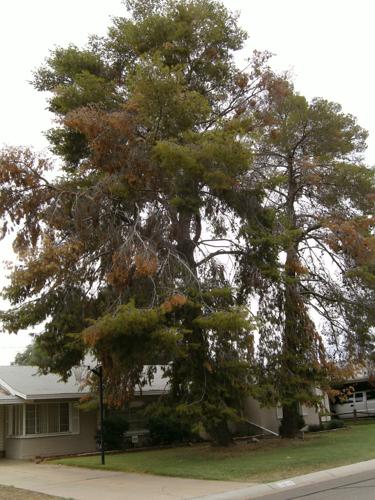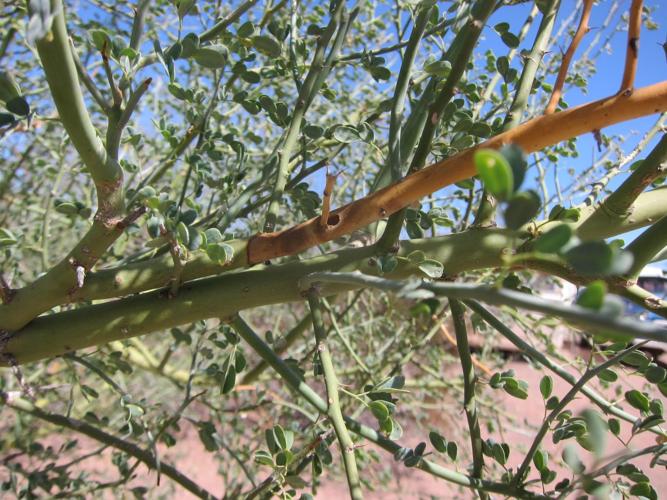Q: I have two Aleppo pine trees in my front yard. The massive amount of brown needles occurred rapidly and I am not sure why. Do you have any ideas what may have gone wrong?
A: Your trees are suffering from long-term drought. Ideally, they would receive irrigation every two weeks during the summer to a depth of 36 inches, every three weeks in the spring and fall, and once a month in the winter. Because this tree species originates in the Mediterranean region where rainfall is primarily a winter event, the monthly soaks in the cold part of the year are important.
While it appears the browning of the needles happened suddenly, these trees have been slowly reacting to less than average rainfall for many years by gradually dropping needles and branches. According to climatologists, we are in a long-term drought and trees such as yours that did fine for many years on annual precipitation are now reaching a point where they can no longer survive on rainfall alone.
Q: We have a question about how to control an insect that is destroying our otherwise healthy palo verde tree. I’m enclosing a photo of the tree and three photos of what this insect is doing. In the latter you can see the little bored holes it uses to get inside a branch, what the branch looks like when it is done and the third shows some brown spots that may, or may not be related to the insect. Our friends think something similar might be destroying their mesquite trees, although they have never seen the attackers. Any thoughts?
A: Your tree is being attacked by the palo verde twig borer, a sporadic pest that seems to prefer pencil-sized branches to set up housekeeping. They hollow out the area near the holes in the branches, which become brittle and snap off on a windy day.
I see this damage around Tucson most years but not in very many places at once and not always in the same areas. There is not a good way to manage them because their occurrence is hard to predict and fortunately the damage isn’t long lasting or critical. I wouldn’t worry and I would try to think of it as nature’s way of pruning your palo verde.
Your neighbors might be referring to the mesquite twig girdler, which is also a beetle, but from a different family. Its MO is to girdle the twigs from the outside but the end result is similar, twigs fall off the tree. These are not a big deal either and another one of nature’s interesting ways of trimming trees.
Q: What is this? It’s growing at the base of our palo verde.
A: That is a Ganoderma fungus and unfortunately it’s not a good sign. The part you see is the fruiting body of the fungus and the rest is inside the tree. It begins as a root rot that infects the tree from a wound of some sort. The fungus is found in the soil. Once it is in the tree there is nothing you can do to treat the problem. A tree that is rotten on the inside is a liability. The tree may live a bit longer but its days are numbered. I can’t see the whole tree from your photo so it would be good to have an arborist examine the tree in person to determine the gravity of the situation. If this tree is of significant size and location that it could harm people or property nearby if it fell, you should look into having the tree taken down soon. Consulting a couple certified arborists would be wise to get multiple estimates on the potential cost and timing for this operation.
Q: Yesterday I noticed the leaves were gone on our Desert Willow. As I got close I saw the same type of worm/caterpillar that were found on tomato plants back in Pennsylvania. There were four or five about five or six-inches long and two smaller ones. What are they? I removed them and have not found any more on any other plants.
A: Your insect is the rustic sphinx moth caterpillar. They are common across the U.S. and are not considered to be a pest insect worth managing. They will eat a few leaves but there usually aren’t enough of them to defoliate a tree. Picking them off the plants is often enough and as you saw they are only around for a short time before they crawl off to pupate. They are closely related to the tomato hornworm you remember from back in PA but they are a different species and feed on different plants.





